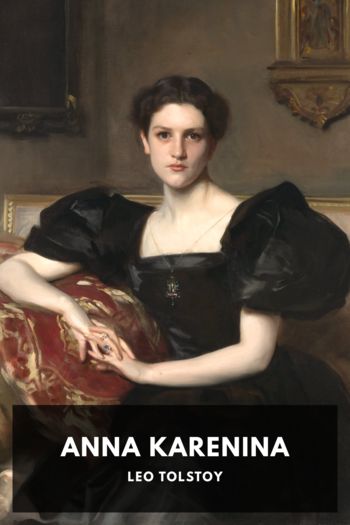What Is Art? Leo Tolstoy (good books to read for 12 year olds TXT) 📖

- Author: Leo Tolstoy
Book online «What Is Art? Leo Tolstoy (good books to read for 12 year olds TXT) 📖». Author Leo Tolstoy
And, just in this same way, in all branches of art, many and many works considered great by the upper classes of our society will have to be judged. By this one sure criterion we shall have to judge the celebrated Divine Comedy and Jerusalem Delivered, and a great part of Shakespeare’s and Goethe’s works, and in painting every representation of miracles, including Raphael’s Transfiguration, etc.
Whatever the work may be and however it may have been extolled, we have first to ask whether this work is one of real art or a counterfeit. Having acknowledged, on the basis of the indication of its infectiousness even to a small class of people, that a certain production belongs to the realm of art, it is necessary, on the basis of the indication of its accessibility, to decide the next question, Does this work belong to the category of bad, exclusive art, opposed to religious perception, or to Christian art, uniting people? And having acknowledged an article to belong to real Christian art, we must then, according to whether it transmits the feelings flowing from love to God and man, or merely the simple feelings uniting all men, assign it a place in the ranks of religious art or in those of universal art.
Only on the basis of such verification shall we find it possible to select from the whole mass of what, in our society, claims to be art, those works which form real, important, necessary spiritual food, and to separate them from all the harmful and useless art, and from the counterfeits of art which surround us. Only on the basis of such verification shall we be able to rid ourselves of the pernicious results of harmful art, and to avail ourselves of that beneficent action which is the purpose of true and good art, and which is indispensable for the spiritual life of man and of humanity.
XVIIArt is one of two organs of human progress. By words man interchanges thoughts, by the forms of art he interchanges feelings, and this with all men, not only of the present time, but also of the past and the future. It is natural to human beings to employ both these organs of intercommunication, and therefore the perversion of either of them must cause evil results to the society in which it occurs. And these results will be of two kinds: first, the absence, in that society, of the work which should be performed by the organ; and secondly, the harmful activity of the perverted organ. And just these results have shown themselves in our society. The organ of art has been perverted, and therefore the upper classes of society have, to a great extent, been deprived of the work that it should have performed. The diffusion in our society of enormous quantities of, on the one hand, those counterfeits of art which only serve to amuse and corrupt people, and, on the other hand, of works of insignificant, exclusive art, mistaken for the highest art, have perverted most men’s capacity to be infected by true works of art, and have thus deprived them of the possibility of experiencing the highest feelings to which mankind has attained, and which can only be transmitted from man to man by art.
All the best that has been done in art by man remains strange to people who lack the capacity to be infected by art, and is replaced either by spurious counterfeits of art or by insignificant art, which they mistake for real art. People of our time and of our society are delighted with Baudelaires, Verlaines, Moréases, Ibsens, and Maeterlincks in poetry; with Monets, Manets, Puvis de Chavannes, Burne-Joneses, Stucks, and Böcklins in painting; with Wagners, Listzs, Richard Strausses, in music; and they are no longer capable of comprehending either the highest or the simplest art.
In the upper classes, in consequence of this loss of capacity to be infected by works of art, people grow up, are educated, and live, lacking the fertilising, improving influence of art, and therefore not only do not advance towards perfection, do not become kinder, but, on the contrary, possessing highly-developed external means of civilisation, they yet tend to become continually more savage, more coarse, and more cruel.
Such is the result of the absence from our society of the activity of that essential organ—art. But the consequences of the perverted activity





Comments (0)